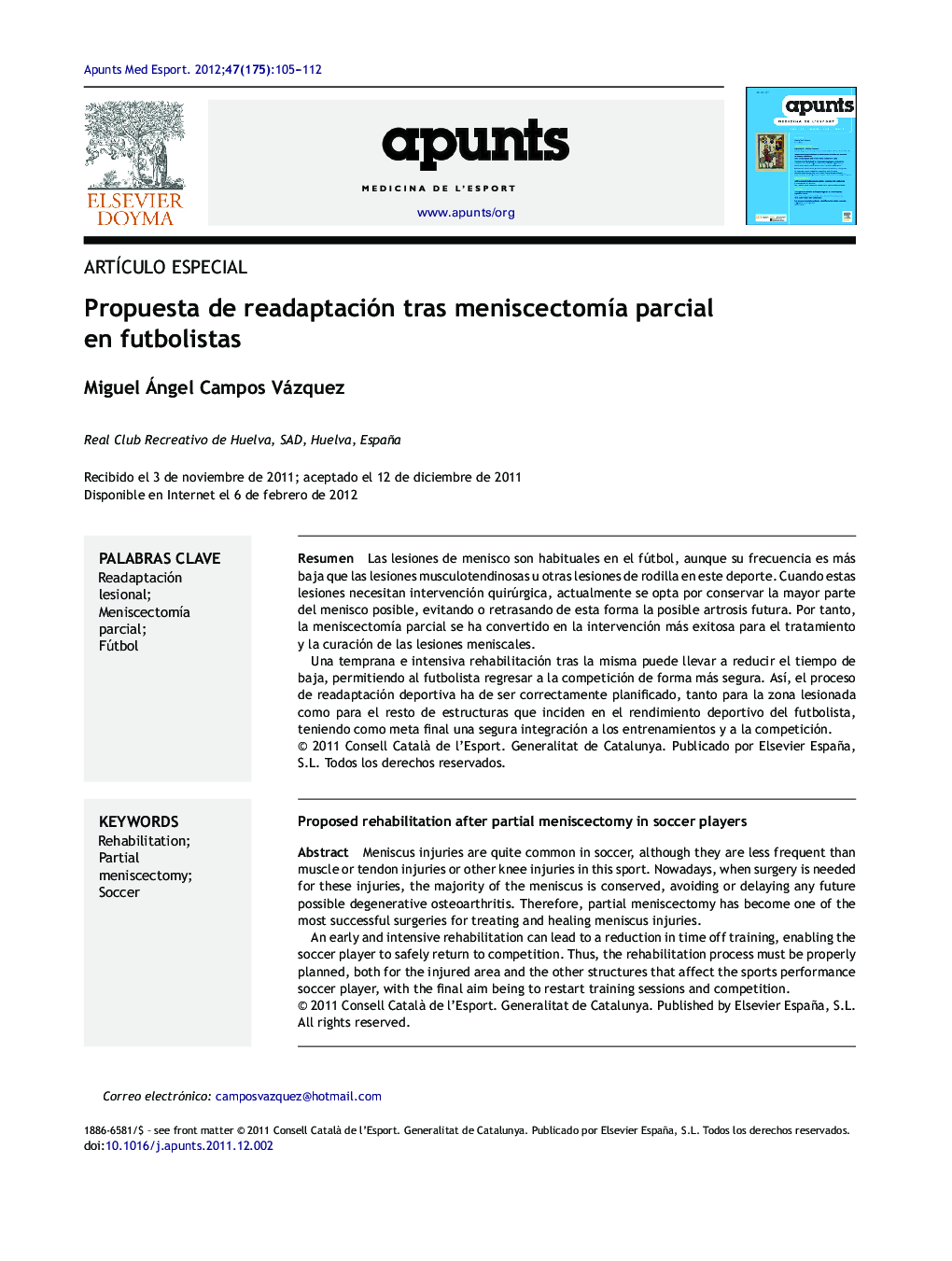| Article ID | Journal | Published Year | Pages | File Type |
|---|---|---|---|---|
| 2738758 | Apunts. Medicina de l'Esport | 2012 | 8 Pages |
ResumenLas lesiones de menisco son habituales en el fútbol, aunque su frecuencia es más baja que las lesiones musculotendinosas u otras lesiones de rodilla en este deporte. Cuando estas lesiones necesitan intervención quirúrgica, actualmente se opta por conservar la mayor parte del menisco posible, evitando o retrasando de esta forma la posible artrosis futura. Por tanto, la meniscectomía parcial se ha convertido en la intervención más exitosa para el tratamiento y la curación de las lesiones meniscales.Una temprana e intensiva rehabilitación tras la misma puede llevar a reducir el tiempo de baja, permitiendo al futbolista regresar a la competición de forma más segura. Así, el proceso de readaptación deportiva ha de ser correctamente planificado, tanto para la zona lesionada como para el resto de estructuras que inciden en el rendimiento deportivo del futbolista, teniendo como meta final una segura integración a los entrenamientos y a la competición.
Meniscus injuries are quite common in soccer, although they are less frequent than muscle or tendon injuries or other knee injuries in this sport. Nowadays, when surgery is needed for these injuries, the majority of the meniscus is conserved, avoiding or delaying any future possible degenerative osteoarthritis. Therefore, partial meniscectomy has become one of the most successful surgeries for treating and healing meniscus injuries.An early and intensive rehabilitation can lead to a reduction in time off training, enabling the soccer player to safely return to competition. Thus, the rehabilitation process must be properly planned, both for the injured area and the other structures that affect the sports performance soccer player, with the final aim being to restart training sessions and competition.
